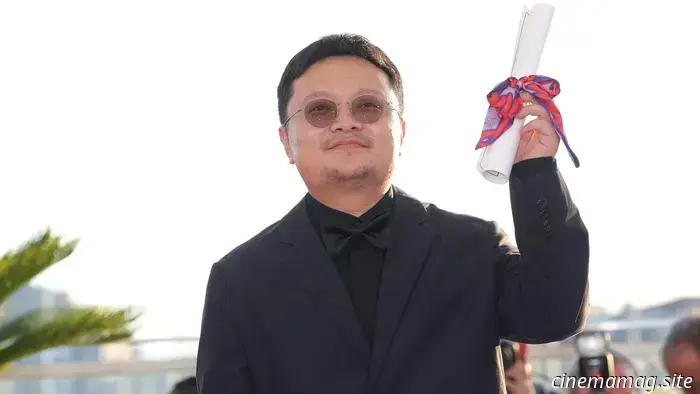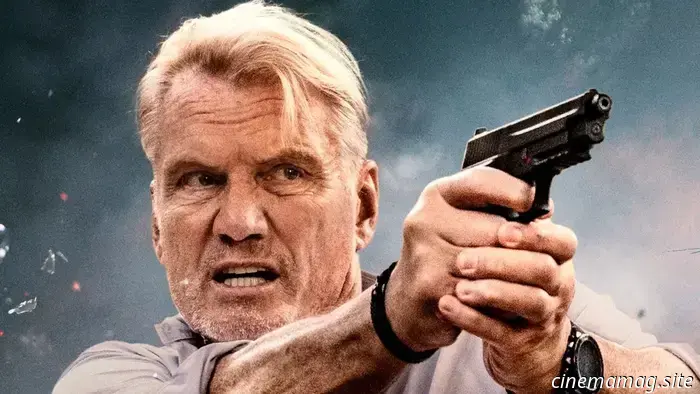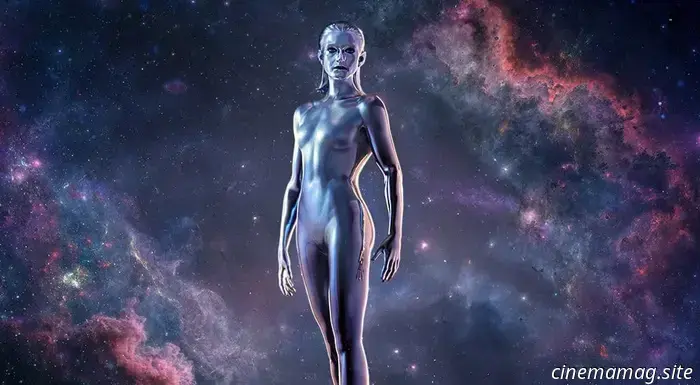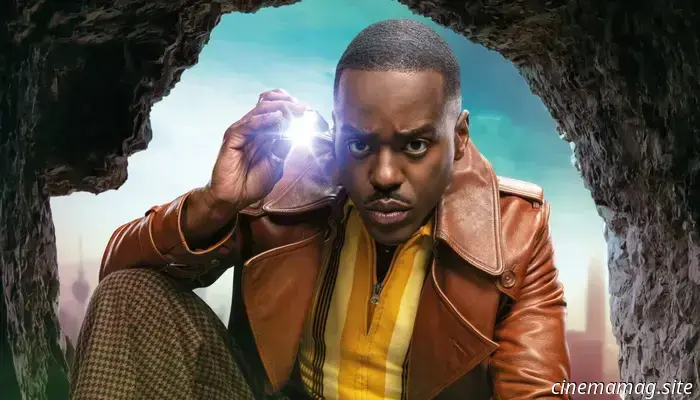
“Cinema Will Not Cease to Exist”: Bi Gan Discusses Resurrection
One of the most eagerly awaited films in the newly inaugurated Competition section of this year's Busan International Film Festival was Resurrection, a grand exploration of cinema history by Bi Gan.
Spanning nearly three hours, this Cannes Jury Special Prize winner delves into a century of film, covering everything from silent comedy to film noir, thrillers, sci-fi, and romance. The narrative provides brief glimpses of classics such as The Cabinet of Dr. Caligari and The Lady from Shanghai, all set in a society where dreaming is illegal.
The film features elements of German expressionism, iconic close-ups reminiscent of Sergio Leone, and David Lynch’s body horror, alongside Bi Gan’s exhilarating long takes and stunning settings. Taiwanese star Shu Qi appears dressed in an ensemble akin to a D.W. Griffith melodrama. Jackson Yee, China’s current heartthrob, portrays several roles as a “Fantasmer,” a shape-shifting dreamer capable of bending time.
Resurrection culminates in a stunning half-hour shot set on New Year's Eve, where cinema appears to come to an end in a theater of melting wax.
“Dreams are vital for humanity,” Bi Gan stated during a press conference the morning following the screening. “In ancient times, before electricity and fire, the nights were dark, providing our ancestors with more time for dreaming. Dreams are essential for our visual imagination and help develop our eyesight. The elements of dreams are invaluable. Film can be as significant and precious as our sight.”
Bi Gan noted that his concepts stem from dreams. The challenge with Resurrection was how to depict these dreams on film. “Expressing my emotions was incredibly challenging,” he mentioned. “Even angels can’t achieve it. So what lens should I use? What if I captured 100 years of cinema? That became my goal.”
The director emphasized that cinema offers an opportunity for audiences to share dreams. “I don't oppose media platforms, but there's something extraordinary about gathering in movie theaters. It’s different from being at home, watching on a smartphone. That feels more like an individual dream. In a theater, we can share a dream collectively. It creates a communal experience that other media cannot replicate.”
Bi’s screenplay, co-written with Xiaohui Zhai, not only blended genres but also drew influence from global cinema. He remarked that it was the first of his films generated not from personal experiences, but from his worldview. “We began with the early 20th century, determining which countries to feature and how to depict angles, sets, and colors using contemporary technology. In each chapter, we examined various genres and technologies.”
When discussing the New Year’s Eve shot, Bi emphasized that he is not focused on cinematic spectacles. “For me, it’s not about the duration of the shot,” he explained. “It's about how it draws us deeper into the narrative.”
The director acknowledged the significant influence of Mark Rothko’s paintings. He praised the teamwork with his cinematographer, production designer, and crew, saying they were integral in shaping and enhancing the shot.
“We experimented with a similar take in Long Day’s Journey Into Night, so executing a long take has become less daunting. The specific details of the New Year’s Eve shot were manageable. What mattered to me was presenting a clear concept for viewers, which Rothko helped facilitate.”
This shot initiates from a first-person viewpoint, tracing Jackson Yee’s character through progressively darker and more violent settings. About midway through, the perspective shifts to third-person, involving a gangster and a femme fatale. “The shot concludes as a young couple, two lovers, rush to the port to catch a boat to freedom,” he described. “I aimed to use natural light and include the actual sky, meaning we couldn't control the illumination. After preparation and scouting, we had about a week to test the shot.
“I wanted the sun to rise at the end of the take,” he added, “but for an entire week, we only had mist and rain. It was on the very last day of filming, as the actors were running to the port, that the lighting finally worked.”
The director expressed his desire for audiences to view Resurrection “on the largest screen possible.” He elaborated, “I embed a lot of information in my films. I believe such details can only be fully appreciated on a large screen.”
Bi Gan admitted to using an iPhone to view early cuts. “However, you can’t entirely grasp what I’m trying to convey. On a big screen, you can fully experience it. With the iPhone, I often felt the film was too lengthy, but on a larger screen, I sensed it could even be extended.”
He collaborated with Anthony Gonzalez of M83 for the soundtrack, sharing a synopsis before the script was finalized. “He sent back a lot of music,” Bi recounted. “We worked together, adjusting throughout the production. In fact, during the final edit, not all of the music was ready. Anthony
Other articles
 Trailer for the action thriller "Exit Protocol" featuring Dolph Lundgren and Michael Jai White.
Saban Films has unveiled a poster and trailer for Exit Protocol, the forthcoming action thriller directed by Shane Dax Taylor. Featuring Scott Martin, Dolph Lundgren, and Michael Jai White, the film centers around…
Trailer for the action thriller "Exit Protocol" featuring Dolph Lundgren and Michael Jai White.
Saban Films has unveiled a poster and trailer for Exit Protocol, the forthcoming action thriller directed by Shane Dax Taylor. Featuring Scott Martin, Dolph Lundgren, and Michael Jai White, the film centers around…
 Comic Book Sneak Peek – G.I. Joe: A Real American Hero #321
Three hundred issues after the legendary 'Silent Interlude,' Larry Hama returns with another wordless treat next week in G.I. Joe: A Real American Hero #321, and you have the opportunity to get your hands on a s...
Comic Book Sneak Peek – G.I. Joe: A Real American Hero #321
Three hundred issues after the legendary 'Silent Interlude,' Larry Hama returns with another wordless treat next week in G.I. Joe: A Real American Hero #321, and you have the opportunity to get your hands on a s...
 Iron Studios has revealed the collectible statue of the Silver Surfer from The Fantastic Four: First Steps.
Iron Studios has officially revealed its 1:10 scale Silver Surfer statue, which is based on the portrayal of Julia Garner as the Herald of Galactus in The Fantastic Four: First Steps. The Marvel…
Iron Studios has revealed the collectible statue of the Silver Surfer from The Fantastic Four: First Steps.
Iron Studios has officially revealed its 1:10 scale Silver Surfer statue, which is based on the portrayal of Julia Garner as the Herald of Galactus in The Fantastic Four: First Steps. The Marvel…
.jpg) Film Review – The Severed Sun (2025)
The Severed Sun, 2024. Directed by Dean Puckett. Featuring Toby Stephens, Emma Appleton, Barney Harris, Lewis Gribben, James Swanton, and Jodhi May. SYNOPSIS: Anxiety infiltrates a remote religious…
Film Review – The Severed Sun (2025)
The Severed Sun, 2024. Directed by Dean Puckett. Featuring Toby Stephens, Emma Appleton, Barney Harris, Lewis Gribben, James Swanton, and Jodhi May. SYNOPSIS: Anxiety infiltrates a remote religious…
 The Fifteenth Doctor and Belinda return in the first-look preview of Doctor Who: The Prison Paradox #1.
The Fifteenth Doctor and Belinda are back this November with the debut of the four-issue limited series Doctor Who: The Prison Paradox, and you can catch an early glimpse with an a…
The Fifteenth Doctor and Belinda return in the first-look preview of Doctor Who: The Prison Paradox #1.
The Fifteenth Doctor and Belinda are back this November with the debut of the four-issue limited series Doctor Who: The Prison Paradox, and you can catch an early glimpse with an a…
“Cinema Will Not Cease to Exist”: Bi Gan Discusses Resurrection
One of the most eagerly awaited films in the newly launched Competition section at this year's Busan International Film Festival was Resurrection, an ambitious exploration of film history by Bi Gan. Spanning nearly three hours, this recipient of the Cannes Jury Special Prize delves into a century of cinema, covering everything from silent comedies to film noir, thrillers, and science fiction.
